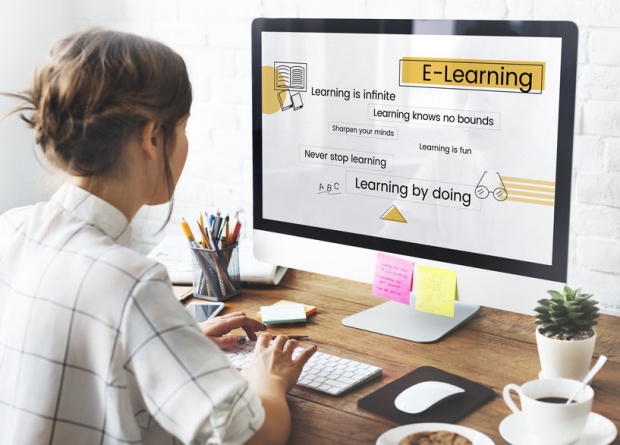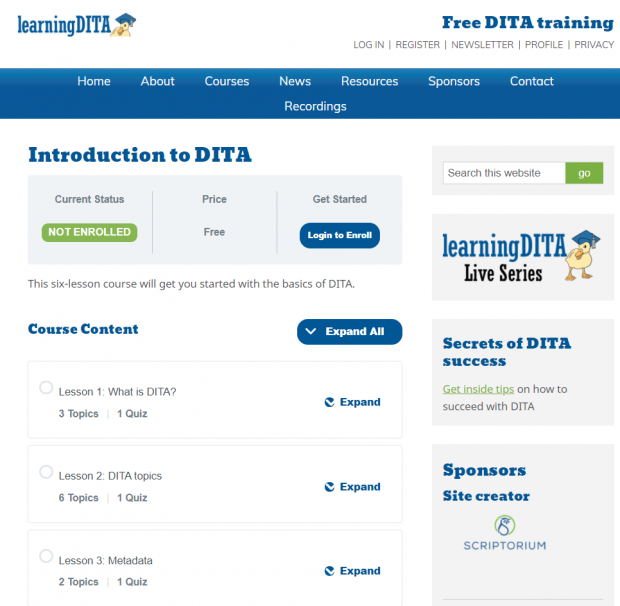Blended Learning – or how you learn best online
Digital training courses become more and more popular. In times of COVID-19 and home office, many training providers are switching to digital learning. For the Milleninials, the generation Y, growing up in a digital environment, digital learning is quite natural anyway. But does digital learning really only offer advantages compared to traditional classroom training? Which methods does digital learning offer? And what exactly is blended learning?

Traditional vs. digital training
In a traditional training course, students and trainer meet in a classroom. There are printed or electronic training materials and small-group exercises. This kind of training offers opportunities for personal meetings, discussions, and questions. The students can add notes to the training material, and if the trainer adds an audio track, it enhances the material.

However, traditional training courses also have disadvantages: The trainer determines the pace and quality of the training. Traveling and overnight stays can be expensive and offer little flexibility.
Digital training conveys knowledge with the help of digital media. This includes online courses and webinars, but also things of everyday life. Who of us hasn't quickly googled something or watched a YouTube tutorial? The offer of digital knowledge is huge and continues to grow on all kinds of digital platforms and channels – regardless of whether it is our own content or professional training courses.
Digital Learning: E-learning and blended learning
We distinguish between two types of digital learning: e-learning and blended learning.
E-learning
E-learning uses digital media such as self-study material, videos and forums for presenting the training content and for the communication between the student and the trainer. In e-learning courses, the students determine when and where they study as well as the pace. The only requirements are an appropriate device and an internet connection. For this form of self-directed learning, however, students need good time management and self-discipline.

For the e-learning courses, the trainers create content that is tailored to the requirements of the students and the medium. That is why producing digital learning materials usually is costly; however, the costs can quickly pay off for recurring training courses.
Blended Learning
Blended learning combines the tradional classroom training with self-study, supported by digital media.

During the attendance period of a blended-learning course, teachers and students meet in person or online on fixed dates. During the self-study period, students complete their e-learning units, work on assignments, or take electronic exams. Students can work on their assignments at their own pace and alone or in study groups.
The teachers prepare the learning content for all training periods in a user and media-friendly manner and select the proper type of training for a topic. They also make sure that there is a good mixture of classroom teaching and self-study. Classroom teaching is often used to deepen the acquired knowledge. Often, the two periods are held in rotation. The trainers also act as moderators of the learning process.
Combining the different learning types creates a mixture of of synchronous and asynchronous methods which can make blended-learning training a varied and successful experience.
E-learning and blended learning compared
In both e-learning and blended learning courses, the trainers formally specify the learning content and media, for example, as web-based training (WBT), videos, and podcasts.
In e-learning courses, the trainers are not physically present. They exchange information with their students only indirectly and even asynchronously in chat rooms, forums or by leaving comments on learning material. Therefore, students of e-learning courses cannot benefit from the effect of learning in a group. In blended-learning courses, students benefit from the presence of the trainer and the direct exchange.
The organizational effort for blended-learning courses is higher than for e-learning courses. Students can start an e-learning course at any time. When they enroll in a blended-learning course, they get a training plan with scheduled online meetings, learning goals, tasks and tests. Even though students can still study regardless of location, they are bound to specific dates because future training content builds on previous learning objectives. Only during the self-study phase, students can organize their training freely.
Advantages of blended learning
Collaboration instead of isolation. Working in groups makes it easier for students to exchange knowledge. It also strengthens social structures (social learning). When we supplement self-study units with web meetings and learning groups, students can better work together. During web meetings, trainers present the training material directly, and students can ask questions. Web meetings also offer the opportunity for feedback. Students can compare their solutions and discuss the different aspects. In this way, students do not just repeat what they have learned; they also deal with the training content more intensively. This method leads to a deeper understanding and consolidates what has been learned.
Having fun. The gaming character of point systems in tests or small competitions between learning groups can have a refreshing and motivating effect on the students and offers a welcoming change. Group dynamics and trainers also have a motivating effect on the students and are more popular, in contrast to mere e-learning courses. The trainer becomes a learning companion instead of a lecturer.

Compete for the cup! Example from a blended-learning training course by parson
Yes to structure, but not too much. A training plan provides structure, but this structure offers enough flexibility to integrate learning into everyday life without complications. Being free from restrictions of time and place also saves time and, last but not least, costs for travelling, renting a room and such.
Disadvantages of blended learning
However, for some it can be difficult to integrate a training schedule with pre-defined stages and web meetings into everyday life. If participants cannot acquire the learning content in a given time or if they drop out at short notice, they still have the learning material. But they will miss studying in a group and the instructions or motivation by the trainer.
Technical barriers. If participants do not have a computer or access to the internet, they cannot study or attend sessions. Even a bad internet connection can make it difficult to attend web meetings. Plus, a lack of digital skills or software problems can limit the exchange between students and trainers and have a bad influence on the learning experience and the success of the training.
Expensive preparation. It is expensive to develop a training course that takes into account the needs and the knowledge of the students and also is suitable for the given media. We can convey a lot of knowledge digitally, but there are limits. In classroom training, teachers convey their knowledge verbally. Online, they must provide it as text, videos, or audio tracks. To do that successfully, the trainer must have the corresponding media skills. It's not enough to just copy PowerPoint slides. Students can get quickly bored and become unmotivated.
The organizational effort for scheduling appointments between the trainer and the students is higher than for e-learning or classroom training. Trainers must coordinate several smaller meetings on different days allowing for sufficient time for self-study in between. In turn, students no longer have a predefined period of time for studying. Instead, there are several small lessons spread over a longer period of time.
Individual barriers. Trainers can influence the success of a blended-learning training course only to a certain extend. If students lack the discipline or self-learning competence, this has a negative effect on the learning success. The direct exchange between students and trainer also requires a certain self-confidence of the students. They are encouraged to present their work results or to address issues they have not understood. But not all students always feel comfortable doing it. Some can feel uncomfortable demonstrating their lack of knowledge in front of the group or being made aware of mistakes. This is where the trainer's empathy is needed.
Conclusion
Despite some disadvantages, blended learning offers clear advantages: Due to the varied mixture of learning methods, the blended-learning method can make the training a successful and sustainable experience. The trainers can design learning content in such a way that it supports every type of learner. Students can study in groups, have one or more trainers as contact persons and exchange information directly with them. The flexible training schedule can be easily integrated into the daily work routine.
This is how blended learning by parson works:
Add new comment